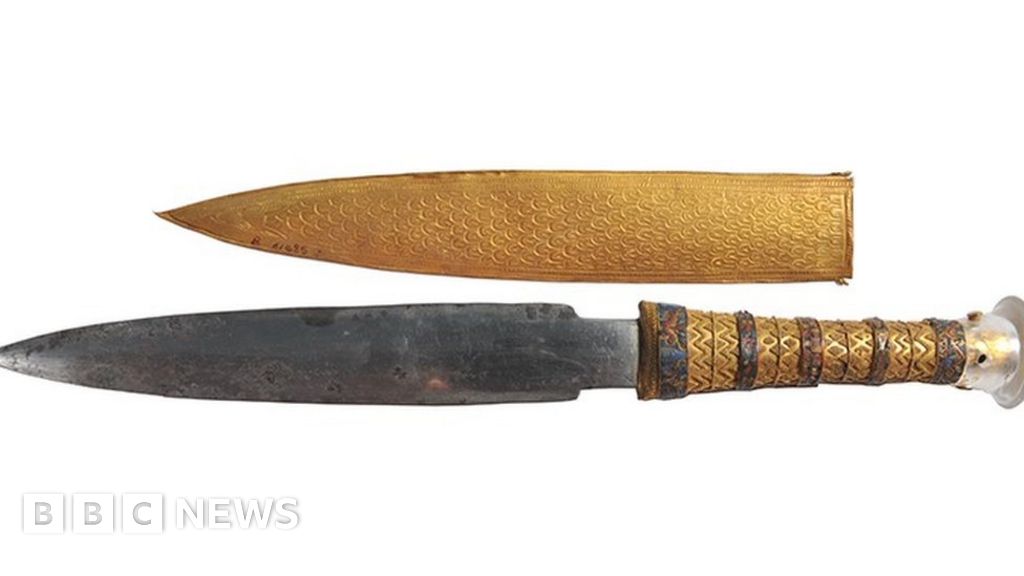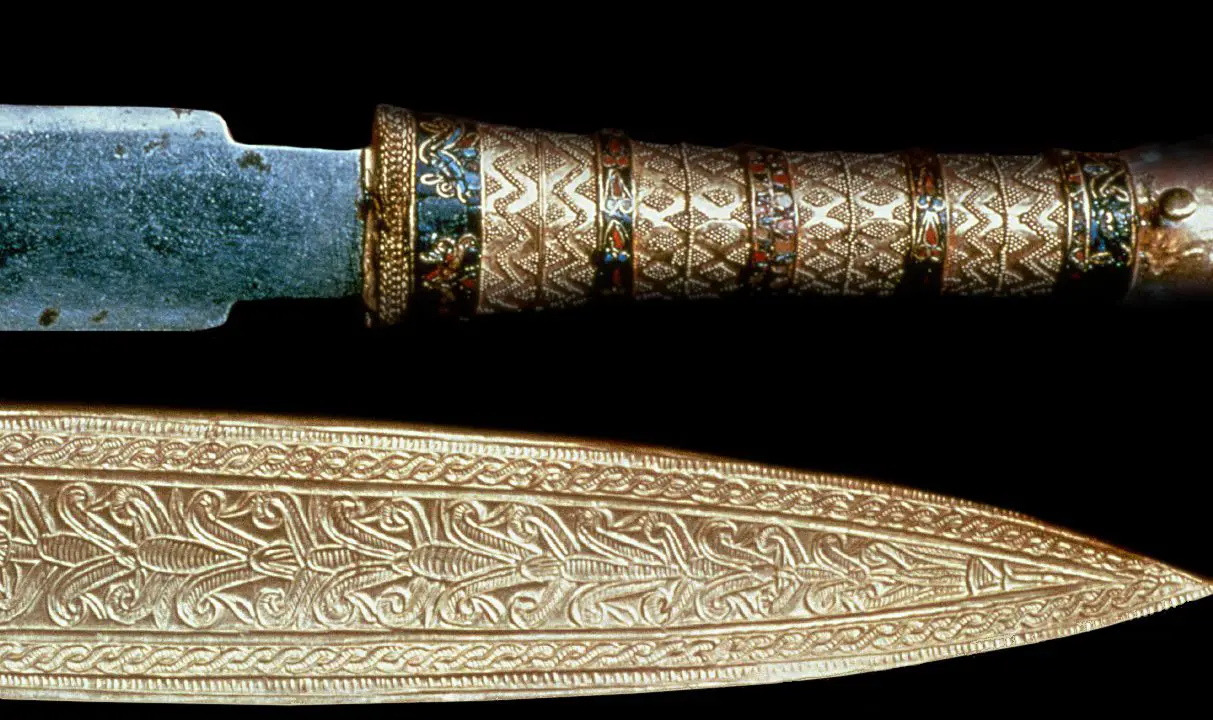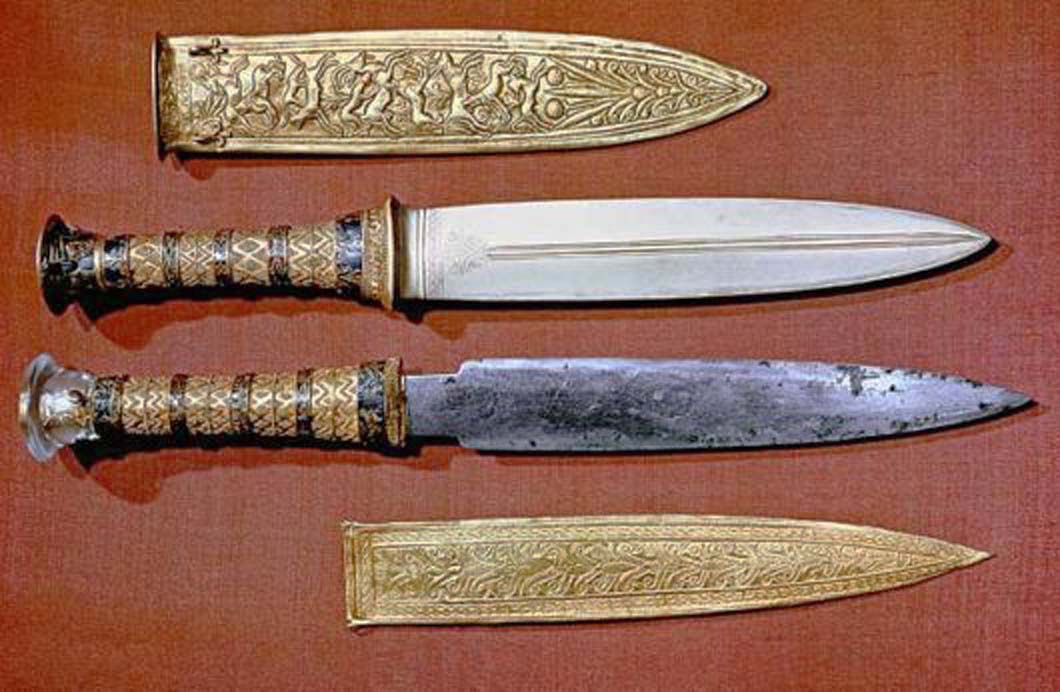 IN 1922, EGYPTIAN EXCAVATORS LED BY HOWARD CARTER DISCOVERED THE TOMB OF TUTANKHAMUN, AN EGYPTIAN PHARAOH WHO WAS THE LAST OF HIS ROYAL FAMILY TO RULE DURING THE END OF THE 18TH DYNASTY.
IN 1922, EGYPTIAN EXCAVATORS LED BY HOWARD CARTER DISCOVERED THE TOMB OF TUTANKHAMUN, AN EGYPTIAN PHARAOH WHO WAS THE LAST OF HIS ROYAL FAMILY TO RULE DURING THE END OF THE 18TH DYNASTY.
Located in the Valley of the Kings on the west bank of the Nile opposite Thebes (modern Luxor), the tomb, KV62, was buried in mounds of debris from the cutting of KV9 for Pharaoh Ramesses V over 150 years after Tutankhamun’s death.
The discovery caused a media frenzy, revealing 5,398 items that included: a solid gold coffin, face mask, thrones, archery bows, trumpets, a lotus chalice, two Imiut fetishes, gold toe stalls, furniture, food, wine, sandals and fresh linen underwear.
Among the artefacts were a set of iron blades that resemble the PeseshKaf, a tool used in the “opening of the mouth ceremony,” a ritual performed for the deceased to enable them to breath, speak, eat and drink in the afterlife.
One of these blades is an iron dagger with an ornamental golden sheath, expertly produced by an ancient metalsmith.
The Howard Carter Archives describes the dagger as having a finely manufactured blade made from a homogeneous metal, while the handle is made of fine gold and is decorated with cloisonné and granulation work, ending with a pommel of rock crystal. On one side of the golden sheath is a floral lily motif, while on the other is a pattern of feathers terminating with a jackal’s head.

Examples in Egypt of contemporary smelting during the 18th Dynasty to produce Iron are very rare, and likely produced low-quality iron to be forged into precious objects. As the other blades found in the tomb are relatively crude, many scholars suggest that the ornamental dagger was imported to Egypt perhaps as a royal gift from a neighbouring territory or kingdom.
Diplomatic documents (the Amarna letters), that date from the 14th century BC mention royal gifts made of iron given to the pharaohs of Egypt from before Tutankhamun’s reign. Interestingly, one of these documents notes that Tushratta, King of Mitanni, sent iron objects to Amenhotep III (possibly Tutankhamun’s grandfather), which mentions iron blades in the lists.
Since the 1960’s, researchers suggested the nickel content in the blade was indicative of meteoric origin, with a more recent study in 2016 derived from an x-ray fluorescence spectrometer analysis, indicating that the blade’s composition is mainly iron (Fe), 10.8% nickel (Ni) and 0.58% cobalt (Co).
This study compared the blade composition to 11 meteorites of well-known compositions and 11 certified steel reference materials, concluding that the blade composition and homogeneity, closely correlates with meteorite composition and homogeneity from a source of extra-terrestrial origins.
This is further supported by a study published in February 2022, which conducted a non-destructive two-dimensional chemical analysis and suggests that the source meteorite of the blade is octahedrite, one of the most common structural classes of iron meteorites.
Header Image Credit : Bridgeman Images